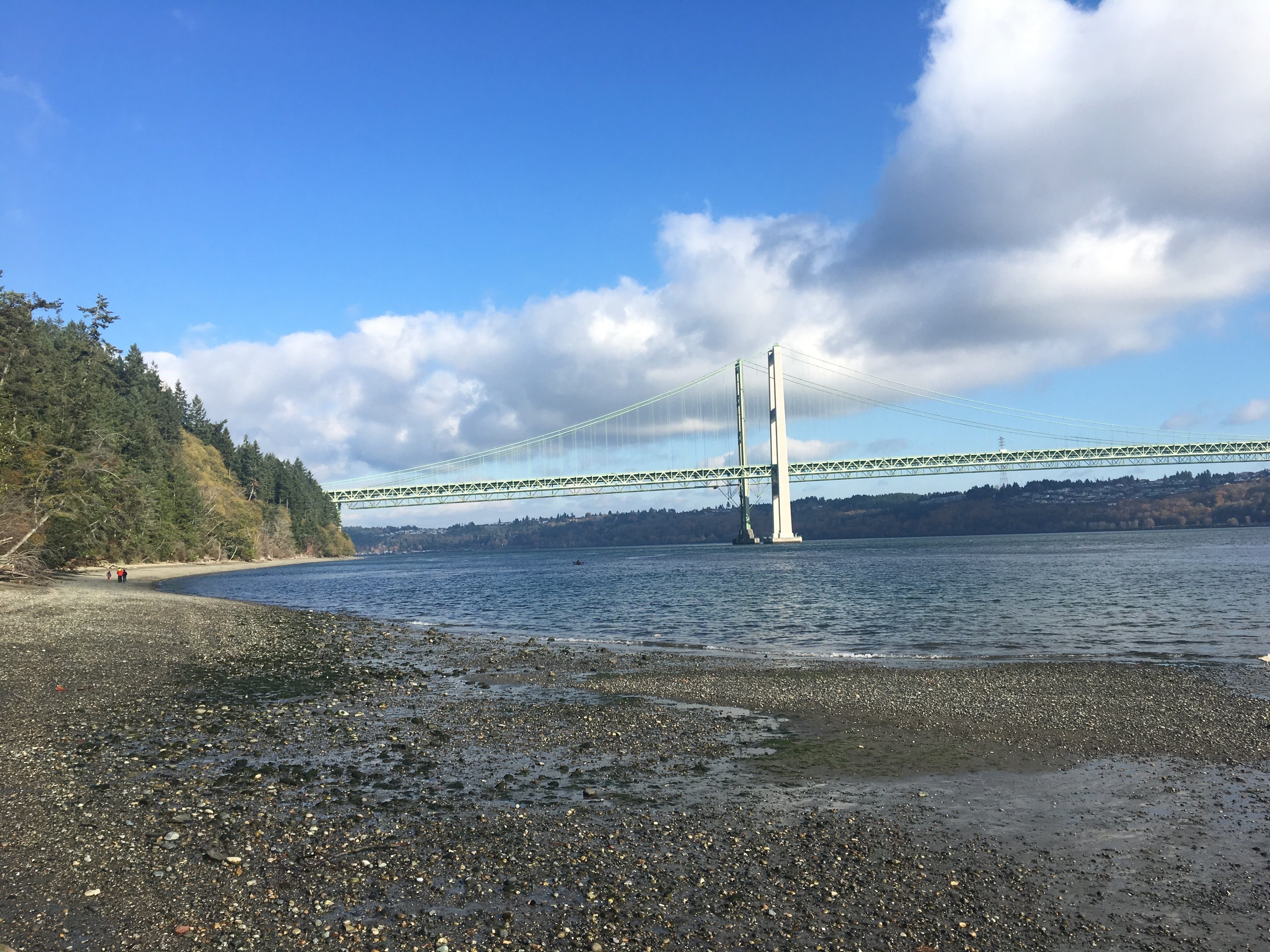What are forage fish?
Forage fishes are small, schooling fish species that are a significant prey source for larger predatory fish and wildlife, including salmon. Certain forage fishes such as surf smelt are also used in commercial or recreational fisheries. One task force dedicated to researching global forage fish populations, the Lenfest Forage Fish Task, found that forage fish that become prey for other commercial fisheries species are twice as valuable globally ($11.3 billion) than they are as direct catch ($5.6 billion).
The three most common forage fish in Puget Sound are Pacific herring, surf smelt, and Pacific sand lance.
- Pacific herring are divided between migratory and residential populations. Migratory Pacific herring reside in Puget Sound during the winter and move out to the Strait of Juan de Fuca in the summer. Resident populations stay in the Puget Sound year-round. Pacific herring spawn between January and April within sheltered bays on submerged aquatic vegetation such as eelgrass.

- Surf smelt use nearshore habitats and spawn in a variety of upper intertidal beach habitats. The surf smelt spawn annually in predictable locations. The first spawning beaches mapped by WDFW in the 1930’s are still in use today. Populations can be divided into summer spawners, fall/winter spawners, and year-round spawners, but spawning in summer or fall is the most common.
- Pacific sand lance tend to spawn during the fall and early winter in the upper intertidal zone on sand and gravel beaches. From March to August pacific sand lance can be found using open water habitats. Adults will forage during the day, feeding on zooplankton and plankton. During the non-spawning season sand lance became inactive and burrow underneath the beach; this burrowing habitat is usually well-washed, fine sand and fine gravel free of mud.


 currently spawning on a beach. Forage fish tend to spawn near the water’s edge during high tide where the eggs will adhere to the substrate and incubate on the beach. During the survey, trained biologists collect several samples of beach substrate from the intertidal zone when the tide is low. Herring eggs are large enough to be seen with a human eye, but other eggs are too small to detect merely by looking at the beach. One surf smelt egg is about the size of FDR’s eye on a U.S. dime. The biologists must use a microscope to search the substrate samples for any forage fish eggs.
currently spawning on a beach. Forage fish tend to spawn near the water’s edge during high tide where the eggs will adhere to the substrate and incubate on the beach. During the survey, trained biologists collect several samples of beach substrate from the intertidal zone when the tide is low. Herring eggs are large enough to be seen with a human eye, but other eggs are too small to detect merely by looking at the beach. One surf smelt egg is about the size of FDR’s eye on a U.S. dime. The biologists must use a microscope to search the substrate samples for any forage fish eggs. healthy marine ecosystem. Washington Department of Fish and Wildlife (WDFW) protects forage fish species and spawning habitats through the Hydraulic Project Approval (HPA) permitting process. WDFW can require a forage fish spawning survey to ensure that in-water or over-water development projects, such as docks, bulkheads, and in-water boat ramps, do not harm forage fish populations during construction. Similarly, many local governments protect forage fish species and their spawning habitats under their Critical Areas code and work with WDFW to ensure no net loss of spawning habitat.
healthy marine ecosystem. Washington Department of Fish and Wildlife (WDFW) protects forage fish species and spawning habitats through the Hydraulic Project Approval (HPA) permitting process. WDFW can require a forage fish spawning survey to ensure that in-water or over-water development projects, such as docks, bulkheads, and in-water boat ramps, do not harm forage fish populations during construction. Similarly, many local governments protect forage fish species and their spawning habitats under their Critical Areas code and work with WDFW to ensure no net loss of spawning habitat. or over-water development projects. These work windows establish the time of the year these projects may occur to minimize impacts to forage fish. Because forage fish spawn timing varies by species and location, the WDFW must set broad work windows that are species and location based. For example, herring spawn typically from January to April, but a few northerly stocks spawn all the way through mid-June. If the project area has not been previously surveyed, then WDFW evaluates whether the beach provides potential spawning habitat for forage fish to determine whether a survey will be required. If WDFW deems a forage fish survey appropriate, then this requirement will become a condition of the project permit.
or over-water development projects. These work windows establish the time of the year these projects may occur to minimize impacts to forage fish. Because forage fish spawn timing varies by species and location, the WDFW must set broad work windows that are species and location based. For example, herring spawn typically from January to April, but a few northerly stocks spawn all the way through mid-June. If the project area has not been previously surveyed, then WDFW evaluates whether the beach provides potential spawning habitat for forage fish to determine whether a survey will be required. If WDFW deems a forage fish survey appropriate, then this requirement will become a condition of the project permit.